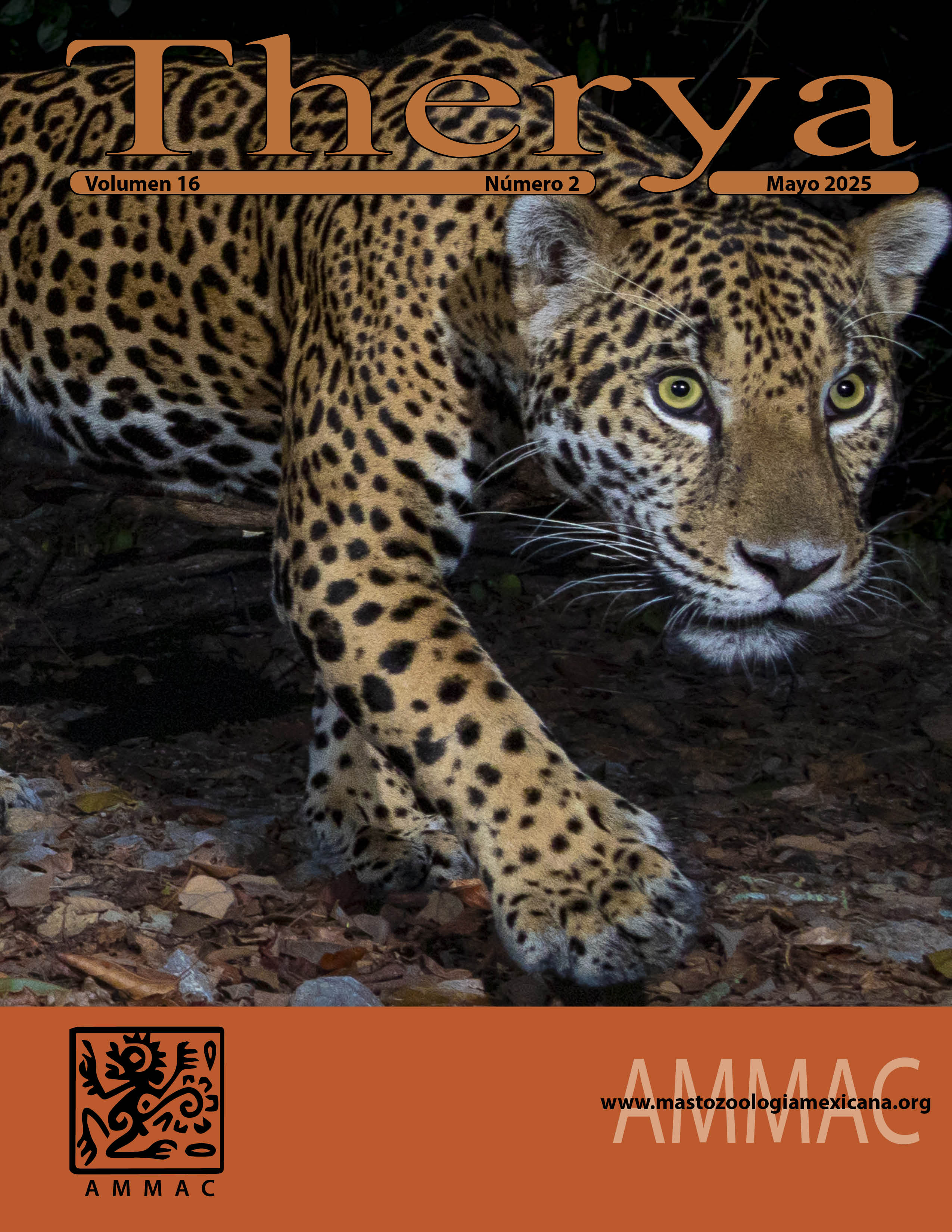Habitat use of Myocastor coypus in the Ciervo de los Pantanos National Park, Buenos Aires, Argentina
Keywords:
multi-scale; Paraná River; populations; rodent; wetlandsAbstract
The present research was carried out in the two main wetlands of the Ciervo de los Pantanos National Park (PNCP), Province of Buenos Aires, Argentina: Laguna Grande (LG) and Juncal del Río Luján (JRL). The objectives were: 1) To corroborate the presence of the coypu, Myocastor coypus (Molina, 1782) within the park, so far only confirmed for the coast of the Luján River, and to study the variability between seasons, 2) To evaluate the habitat use of the coypu and the potential variables that determine it through macro and microhabitat scales analysis, and 3) To conduct studies of the spatial disposition of the signs of presence of the species. The last two are fundamental to understanding possible underlying processes, such as food availability or response to the historical hunting pressure. We not only sought to answer which environments of each wetland they use, but also how they use them. The hypotheses were: 1) Sites with signs presence vary between seasons; 2) Sites where signs are present depend on the type of vegetation cover; and 3) Spatial arrangement of signs is clustered. Four transects were surveyed at LG and three at JRL using the transect line method. In each, sites with and without signs were georeferenced, and cover variables of different plant species (%) and water depth (cm) were measured. Generalized linear mixed models (GLMM) with presence/absence as response variable were used for both, macro and microhabitat analysis. For the spatial analysis, a count of signs per quadrant was performed in each wetland and their distribution was evaluated by means of goodness-of-fit tests to Poisson and negative Binomial distributions. At JRL, coypus use both identified environments: Edge of the Marsh (EM) and Inner Marsh (IM). There is no seasonal variation with the exception of spring where there was total absence of signs. No cover variables were detected to predict presence. In the LG they only use the Middle Marsh (MM) environment, and not those of Edge (E) and Open Waters (OW). The probability of detection increases during autumn and winter and Schoenoplectus californicus was the main predictor species for the presence of signs. In both wetlands, signs were found in a clustered disposition. These results confirm the presence of coypu in the CPNP, with the JRL being a potential pathway into the park, and the MM of the LG being a key point of establishment. The environments used and the spatial arrangement of signs could be the result of the sustained food availability through seasons within the used environments, and protection from poaching and predation pressure. The seasonal variation partially coincides with the reproductive peaks previously observed in the wild for the species.
Downloads
Downloads
Additional Files
Published
How to Cite
Issue
Section
License
THERYA is based on its open access policy allowing free download of the complete contents of the magazine in digital format. It also authorizes the author to place the article in the format published by the magazine on your personal website, or in an open access repository, distribute copies of the article published in electronic or printed format that the author deems appropriate, and reuse part or whole article in own articles or future books, giving the corresponding credits.










